Veg of glory: How to cook vegetables like a chef
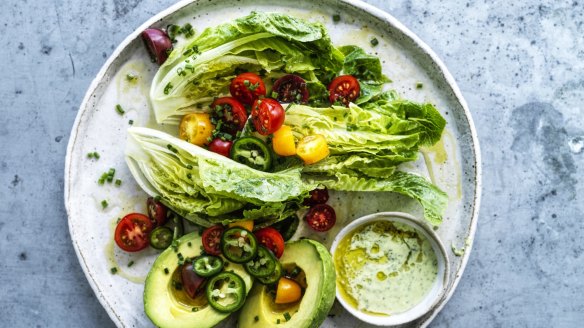
- Four vegetable-rich recipes from Alice Zaslavsky's new cookbook
- Neil Perry's avocado and lettuce salad with green goddess dressing recipe
If chefs are the culinary canaries down the coalmine, then we are well and truly careening head-long into the dawning of the age of asparagus. And isn't it about time?
With one in three Australians committing to reducing their meat consumption, and global food trends pointing squarely at a plant-based revolution, it's clear that vegetables are ready for a rebrand.

Around the world, innovative chefs are encouraging us to rethink the way we see vegetables on the plate – from support act to hero.
At taste-driven restaurant Dirt Candy in New York, for example, chef Amanda Cohen describes vegetables as "candy of the earth", driving her to design plant-based menus that focus on developing flavour, rather than a simulacrum of a meat-based cuisine.
"Everyone thinks of carrots as simply sweet, but they have a brightness that brings out the best in other vegetables too," she says. She uses the juice to replace water in traditional Cantonese bao bun dough, stuffing these with roasted carrot, cooks carrots confit for slipping into sliders, or blitzes them from frozen for carrot sorbet.
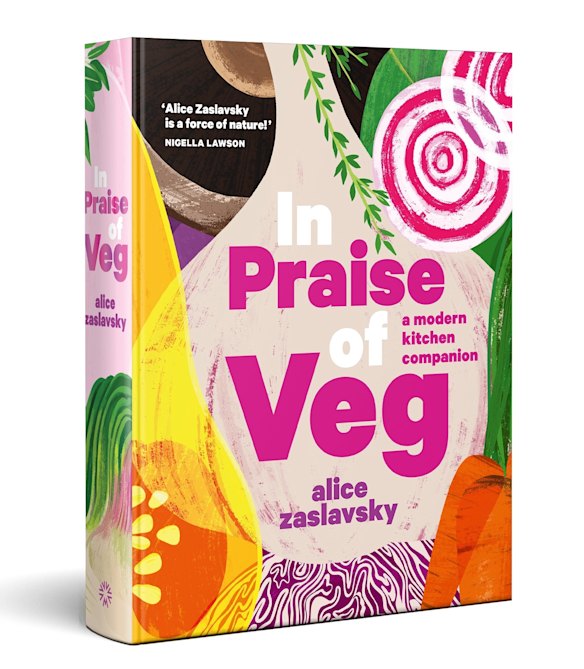
When writing my book In Praise of Veg, I knew I wanted to include these ideas, tips and tricks. Because it's one thing to have an over-enthusiastic veg-head wax lyrical about waxy potatoes, but another still to have that confirmed and amplified by household names and Michelin-starred chefs.
And here's the thing: there's no need to go the whole hogweed to get amongst it. By planning for the vegetable side of the plate first, you'll naturally start paring back the other stuff, without feeling like you're missing out.
Over time, this kind of thinking becomes a habit that's more sustainable for your appetite, your hip pocket, and the planet.
So what can we learn from some of the world's most notable names about cooking with veg at home?
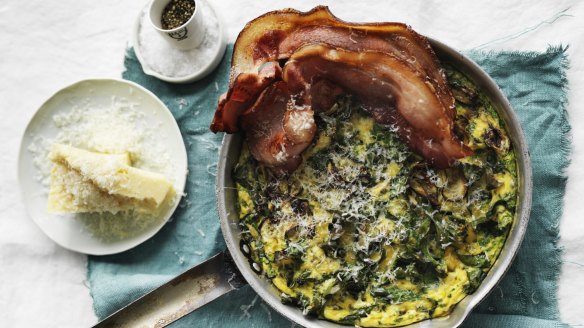
You get back what you put in
You may already hold this to be self-evident, but forking out a little more for what's on your fork is the quickest path to satisfaction. It's what many chefs come back to most in our conversations. It's easier to do less in the kitchen if you start with better produce. Research shows that taste also denotes nutritiousness, which means you need less to feel satisfied. And top-notch veg is still cheaper than mid-range meat.
Go straight to the source. There's never been a better time to get chummy with your local producers. Farmers' markets are a hive of activity, a place you can be guaranteed that the veg will be at its peak, and that any questions you might have can be answered.
But if getting out of bed early at weekends seems like a stretch, you might like to mobilise your clicker-finger. Even the smallest mum-and-dad growers are finding their way online and delivering right to your doorstep – a COVID-19 upside! And some don't bother with an online shop. "Just direct message me," suggests Palisa Anderson, of Boon Luck Farm, who's supplying some of NSW's most exciting restaurants, along with home cooks. Georgie Neal from Sift Produce creates boxes for Sydneysiders to pre-order, sourcing lush leaves and other produce direct from small farms. In Victoria, growers such as Angelica Organic Farm, Mossy Willow Farm and Ramarro Farm offer weekly veg boxes, which will keep you in stock and inspired.
Beyond the fresh stuff, seek out high-quality Australian producers of ferments, pickles and preserves, too. Ingredients such as marinated artichokes, when bought from a top-notch deli, are about as good as you can get, and when given a hit of heat, come up a treat in vego show-stoppers such as my saffron orzo with charred deli artichokes.
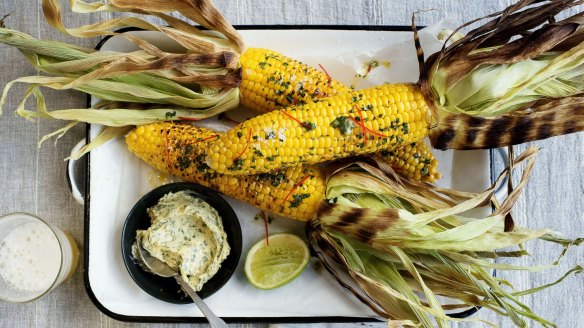
Root to leaf
Home cooks can glean some gold from chefs, who have mastered the art of using all parts of the veg. Corn silk and spring onion roots become frizzled garnishes by a quick fry in hot oil. Root vegetable peel can be baked or fried into crisps and tuiles, corn cobs can flavour stocks, and vegetable cooking water can be used to thin and flavour a dressing. Darren Robertson, of Three Blue Ducks, chars and blitzes corn husks to flavour cookies. In Girona, Spain, Joan Roca uses the intensely red water from cooking beetroot for vinaigrettes and sauces. Simmer cubed beetroot in just enough water to cover, and you can whisk some of the remaining liquid with olive oil and a squirt of orange juice for a zippy zhuzh for salads or stir through creme fraiche for a blushing blini schmear.
Blitzing is also a brilliant way to use up any sad green stuff, like wilty rocket, baby spinach, old parsley, mint and coriander, at the bottom of your crisper. Blend these with a little anchovy, gherkin juice, garlic, lemon and a small amount of mayo and you have a mean green goddess dressing, great for salads – and for drizzling over baked potatoes, according to former Saint Peter and Arc Dining chef Alanna Sapwell. In a similar green goddess vein, Danielle Alvarez, of Fred's in Sydney, blanches cavolo nero (Tuscan kale), subbing in olive oil for mayo and holding the gherkin juice, and hey presto: it's a pasta sauce, or something to stir through risotto towards the end.
And rather than letting foliage fossilise in the fridge, do as chef Phil Wood, of Pt Leo Estate on the Mornington Peninsula, does: put silverbeet, kale and rocket to work by wilting them in a pan, and adding beaten egg to make frittata.
Vegetables such as fennel are like three vegetables for the price of one, says chef George Calombaris. Use the fronds for garnish and flavouring as you might dill, the stalks chopped like celery for a mirepoix, and the base shaved raw in salads or braised.
Ben Shewry's Attica dish All Parts of the Pumpkin was frequently named a favourite by diners, despite pumpkin being "quite the unfashionable vegetable" when he arrived at the restaurant. Shewry felt pumpkin deserved its time in the sun, and so he and the team devised a new way of cooking it. Wedges were steamed for 12 hours, then served with pumpkin seeds, pumpkin seed oil, crispy pumpkin skin and a sour beer and pumpkin juice cream. Think about ways you can accent the main event with its accompanying parts – like toasting pepitas on roasted pumpkin, or fennel fronds on braised fennel, carrot top pesto through a carrot bake.
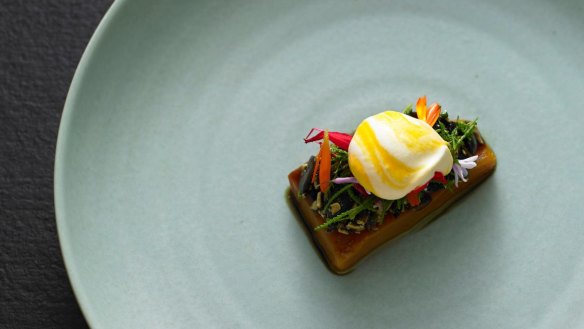
Turn up the heat
Fibrous vegetables such as celeriac, beetroot and kohlrabi all benefit from a long languish in the oven. An hour or so at 220C fan-forced (240C conventional) is plenty – if you can stick a fork in it, it's done. Wrapping veg like these in foil keeps them moist, or you might like to dip them in warm salty water and bake on a rack over a tray to help the outside form its own crust as it bakes.
For chef Matt Wilkinson, at Montalto, on the Mornington Peninsula, activating the sugar in naturally sweet vegetables is all about preparation. This can start with something as simple as preheating your tray in the oven, so that when brassicas such as broccoli or brussels sprouts hit the heat, they char up before the inside even thinks about overcooking. As the outside chars and colours, the insides cook gently. Fifteen minutes at 190C fan-forced (210C conventional) is plenty for oiled up florets and halved sprouts.
You might be surprised by how vegetables respond to an open grill flame. Rick Stein cooks spring onions over charcoal, with a quick flash in boiling water first, then brushing with oil and charring, before dressing them with a mustard and olive oil vinaigrette. "They're particularly felicitous with seafood dishes," he says.
Stein's son Jack, who's inherited both Rick's way with words and his gravitation towards chef jackets, loves char-grilling spring (pointed) cabbage and serving it with nam jim dipping sauce. "It has a wonderful peanut-like taste when charred. Don't blanch it first, just cook it from raw and char the cut side. It wants to be a bit crunchy in the centre."
Sydney chef and restaurateur Matt Moran thinks there's "nothing better than grabbing a beautiful cos lettuce and barbecuing it over charcoal". You don't need a fancy as-seen-on-MasterChef hibachi grill, either. Simply using a Weber or heating a griddle pan until smoking will give you that extra burst of smoky sugariness.
And a smoking hot wok unleashes flavour in green vegetables such as snow peas and bok choy within minutes. I've popped the very best rendition of this – a process I was privy to in Lau's Family Kitchen's actual kitchen.
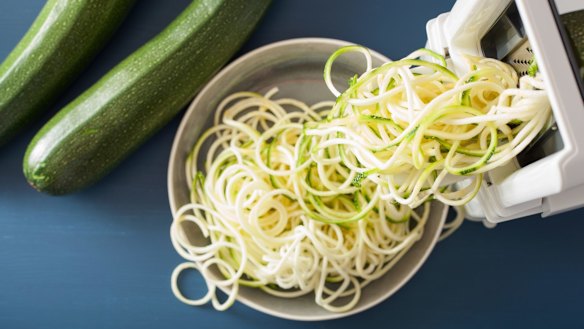
Shapeshifting
Looking for a reason to pull that spiraliser out from the back of the cupboard? In Britain, chef Sat Bains, of two-Michelin-starred Restaurant Sat Bains is cooking spiralised turnip or kohlrabi in an emulsion of parmesan rind, butter, dashi and nutmeg, then serving with a gamey ragout or a pesto made at the table, depending on the season. I'm all about going half-n-half with zucchini noodles and actual pasta for a textural, colourful, veg-packed midweek option, but you could also try giving the spiraliser a workout beyond "zoodles" by using it to thinly slice any root veg – soften with vinegar for salads, or whack with heat from a wok in a stir-fry. You can also use the spiraliser to make oven-baked curly fries – especially good with sweet potato, sprinkled with paprika or cayenne pepper.
Milder-flavoured veg such as cauliflower make for great deep-fried bites. Prise apart florets of cauliflower and broccoli, batter or crumb them and fry them until they become golden nuggets! I'm especially enamoured with the KFC (Keralan Fried Cauliflower) popcorn cauli, which is just as fun as its more familiar chicken version, gluten-free and a hit with kids.
I suppose this is the crux of why I love cooking with vegetables. They're so versatile and varied in their textures, colours, flavours and uses. They're nature's bounty, candy from the soil, solar-powered and sublime.
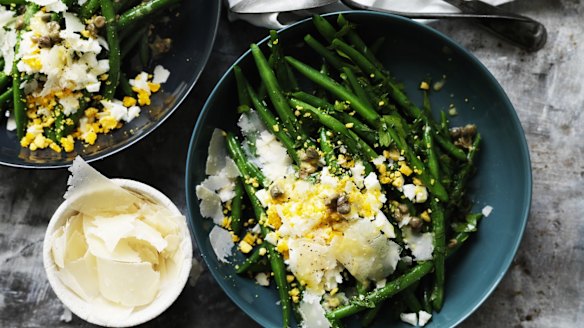
Five tips for better vegies
Onion
Onions build savoury slurpiness in casseroles, sauces and soups, but they take longer than you think to get silky. What's more, once you add any acid, like passata or wine, they'll no longer break down, no matter how long you let the sauce bubble away. For no-sweat sweating, wait for a sizzle, then close the lid, drop the heat and get on with the rest of your prep. Eight to 10 minutes with the odd glance is a good rule of thumb.
Asparagus
Bend asparagus towards the end of the spear, and wherever it snaps is the juncture between juicy and woody. BUT! Don't chuck the woody ends. Blitz, oil, season and bake with breadcrumbs into a crunchy pangrattato – perfect for sprinkling over cheesy bakes, soups and pasta. Wilty asparagus spears can be placed in a jar of water on the fridge door to rehydrate overnight. Asparagus pasta is perfect for this time of year – simply slip spear slices into the water as the pasta's cooking with a minute to go, and drain together. Stir through plenty of parmesan cheese, olive oil and cracked pepper while everything's still warm.
Green beans
There's no need to tail green beans – it's a waste of time AND bean! Twist off the tips and call it a day. Another time-saver is blanching without shocking in iced water… shocking, I know! Five minutes in well-salted water is plenty, and the residual heat will do the rest of the work. While they're still steaming hot is the perfect time to add flavourings – lemon zest, minced garlic and plenty of olive oil is a personal favourite. Tossing hot beans through butter and finely chopped herbs such as parsley and/or mint is another winner.
Tomatoes
Season tomatoes for salads before adding any oily dressing to allow the salt to absorb and the toms to start releasing their natural juiciness. This is handy info for sogg-less sandwiches too – season tomatoes 10 minutes before you assemble the sandwiches, then save the liquid from the board or plate to form a dressing base or add to a sauce. Always add a pinch of sugar to tomato-based sauces to help bring out tomatoes' natural sweetness.
Zucchini
To avoid slimy barbecue slices, grill zucchini and squash without oil to help draw out some of its natural moisture. Dress after it comes off the heat with whatever you were planning to marinate it with – you'll get better flavour, neater char lines and lose that burnt garlic tang. Squeeze out excess moisture from grated zucchini before using for cakes, breads and frittata by salting well and tourniquet-ing in a tea towel. Save this juice for adding to stock or your next green juice!
This is an edited extract from In Praise of Veg by Alice Zaslavsky, Murdoch Books, $59.99. Photography by Ben Dearnley. Buy now